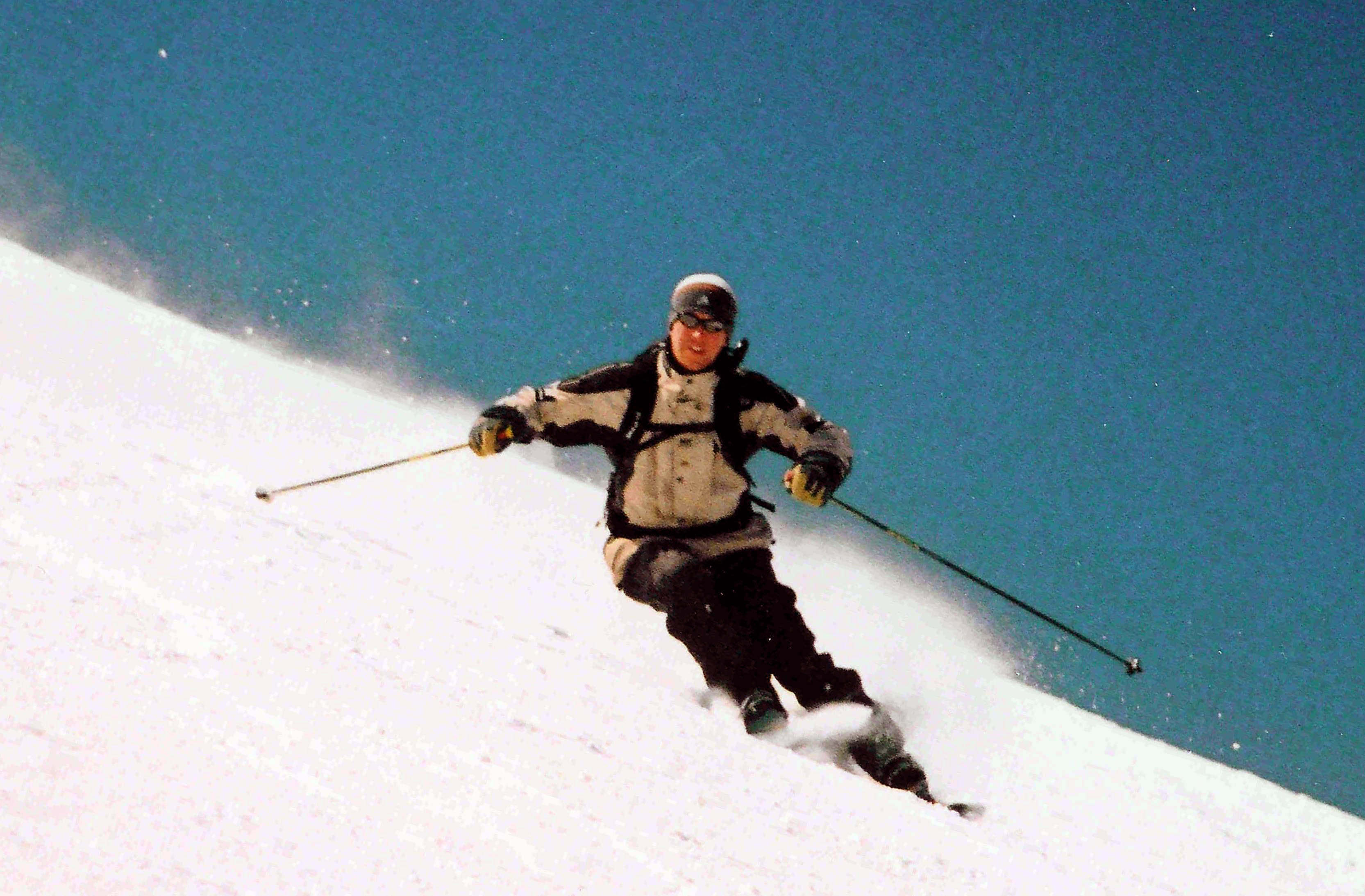5 Basic biomechanics
5.1 Forces, moments, and equilibrium
5.1.1 Forces
- A force is a push or a pull
- A force causes acceleration of a mass \[\begin{split}
F =& \; m a \; ( =m \ddot{x} = m \dot{v})\\
\end{split}\]
- acceleration – \(a\)
- \(a\) is also called \(\ddot{x}\) or \(\dot{v}\)
- position – \(x\)
- velocity – \(v\)
- \(\dot{()}\) the rate of change of \(()\)
- acceleration – \(a\)
- Example
- Weight – the pull of the earth’s gravity on a body
Note Mass (\(m\)) can be considered the bodies resistance to a change in its motion (ie inertia))
5.1.2 Moments
- Similar to a force, a moment is a
pair of forces that cause twisting \[M = I \alpha\]- the angular acceleration – \(\alpha\)
- \(\alpha\) is also called \(\ddot{\theta}\)
- \(\dot{\theta}\) – the angular velocity
- \(\theta\) – the angle (ie the current orientation)
- \(I\) is the rotational inertia
- the angular acceleration – \(\alpha\)
Notes
Moments are also called bending moments or torques
depending on the application.Moments and forces are both described as “generalized forces”
5.1.3 Equilibrium
We have already used another important concept, equilibrium
Forces and changes in momentum remain in balance \[\begin{split} \displaystyle\sum F =& \; m a \\ \displaystyle\sum M =& \; I \alpha \\ \end{split}\]
Much of biomechanics boils down to applying these equations
Static equilibrium – the balance of forces that occurs
when there is no acceleration \[\begin{split} \sum F =& \; 0 \\ \sum M =& \; 0 \\ \end{split}\]
5.2 “Mathematical tools” in biomechanics
5.2.1 Vectors and scalars
5.2.1.1 Vectors
Vectors are quantities that have an associated magnitude and direction.\(^{**}\)
Vector have components
- \(\vec{F}_x = {F}_x i\)
- \(\vec{F}_y = {F}_y j\)
- \(\vec{F} = \vec{F}_x + \vec{F}_y = {F}_x i +{F}_y j\)
Examples of vectors
- Forces (Weight)
- Moments (Torques)
- Velocities
5.2.1.2 Vector sums
- Vector addition is component by component
- Proper (2D) summation results in a parallelogram
5.2.1.3 Scalars
- Scalars have magnitude without direction.
- Examples
- Levels of gray in a image
- Patient mass
- Patient bone density
- Concentration of a drug per unit volume
- Time
- Altitude
5.2.2 Relationship between vectors and scalars
- Scalars and vectors can be linked mathematically

Example: diffusion of nutrients into intervertebral disk driven by gradient of glucose
5.2.2.1 Gradient of a scalar
\[\nabla f = \left(\frac{\partial f}{\partial x_1 }, \dots, \frac{\partial f}{\partial x_n } \right).\]
Gradient of a vector becomes a 2nd rank tensor \[\mathbf{f}=({{f}_{1}},{{f}_{2}},{{f}_{3}})\] \[\nabla \mathbf{f}=\frac{\partial {{f}_{j}}}{\partial {{x}_{i}}}{{\mathbf{e}}_{i}}{{\mathbf{e}}_{j}}\]
Example: strain is gradient of displacement vector
- \[\vec{u} = u {{e_x}}+ v {{e_y}}+ w {{e_z}}\]
- \[= {\varepsilon_{ij}}= \nabla \vec{u} = \left[ \begin{array}{ccc} {\varepsilon_{xx}}& {\varepsilon_{xy}}& {\varepsilon_{xz}}\\ {\varepsilon_{yx}}& {\varepsilon_{yy}}& {\varepsilon_{yz}}\\ {\varepsilon_{zx}}& {\varepsilon_{yz}}& {\varepsilon_{zz}}\\ \end{array} \right]\]
5.2.2.2 Divergence
Similarly, the divergence operator (\(\nabla \cdot ()\)) reduces the
rank of a tensor- i.e., makes a scalar out of a vector
Example: the divergence calculates the strength
of a source or sink of a velocity field in fluid flow
5.2.3 Rigid body and flexible body assumptions
- All bodies are flexible, meaning, all bodies deform when loaded
- For convenience, we often assume that a body is rigid
- (ie we assume that it does not deform when loaded.)
- With this assumption, the mechanics/mathematics is simplified
5.3 Computation of reaction forces
5.3.1 Equilibrium revisited
3D degrees of freedom
- The equations of motion are three dimensional
Three translational degrees of freedom \[\begin{split} \sum F_x =& \; 0 \\ \sum F_y =& \; 0 \\ \sum F_z =& \; 0 \\ \end{split}\]
Three rotational degrees of freedom \[\begin{split} \sum M_x =& \; 0 \\ \sum M_y =& \; 0 \\ \sum M_z =& \; 0 \\ \end{split}\]
5.3.2 Force diagrams, statically equivalent forces, and “free body diagrams”
Draw structural bodies in equilibrium, ie properly constrained or with balanced forces
To compute reaction forces \(R\) and \(B\), use statically equivalent forces (ie place the weight of the forearm at its center of gravity)
Free body diagram
5.3.3 Force diagrams, statically equivalent forces, and “free body diagrams”
Complete calculations using the equilibrium equations
Equillibrium: \[\begin{split} \sum F_y =& \; 0 \\ \sum M =& \; 0 \\ \end{split}\]
Free body diagram with dimensions
5.3.4 Force diagrams, statically equivalent forces, and “free body diagrams”
- Equillibrium: \[\begin{array} \sum F_y =& \; +B - G - W -R = 0 \\ \sum M_R =& \; +(0 \, {\mathrm cm}) (R) + (3 \, {\mathrm cm}) (B) - (15 \, {\mathrm cm}) (G) - (30 \, {\mathrm cm}) (W) = 0 \\ \end{array}\]
Free body diagram with dimensions
5.3.5 Force diagrams, statically equivalent forces, and “free body diagrams”
Use the moment equation first: \[\begin{split} (0\, {\mathrm cm})(R) + (3\, {\mathrm cm})(B) - (15\, {\mathrm cm})(G) - (30\, {\mathrm cm})(W) =& \; 0 \\ \end{split}\] \[\begin{split} (3\, {\mathrm cm})(B) =& \; (15\, {\mathrm cm})(G) + (30\, {\mathrm cm})(W) \\ \end{split}\]
Use known values \[\begin{split} G =&\; 15 \, \mathrm{N}\\ W =&\; 20 \, \mathrm{N}\\ \end{split}\]
Therefore: \[\begin{split} B = \frac{(15 \, {\mathrm cm})(15 \mathrm{N}) + (30\, {\mathrm cm})(20 \mathrm{N})}{3\, {\mathrm cm}} = 275 \, \mathrm{N} \end{split}\]
5.3.6 Force diagrams, statically equivalent forces, and “free body diagrams”
Use the force equation next: \[\begin{split} +B - G - W -R = 0 \\ R = +B - G - W \\ \end{split}\]
Use known values \[\begin{split} G =&\; 15 \, \mathrm{N}\\ W =&\; 20 \, \mathrm{N}\\ B =&\; 275 \, \mathrm{N}\\ \end{split}\]
Therefore: \[\begin{split} R = 275 \, \mathrm{N} - 20 \, \mathrm{N} - 15 \, \mathrm{N}= 240 \, \mathrm{N}\\ \end{split}\]